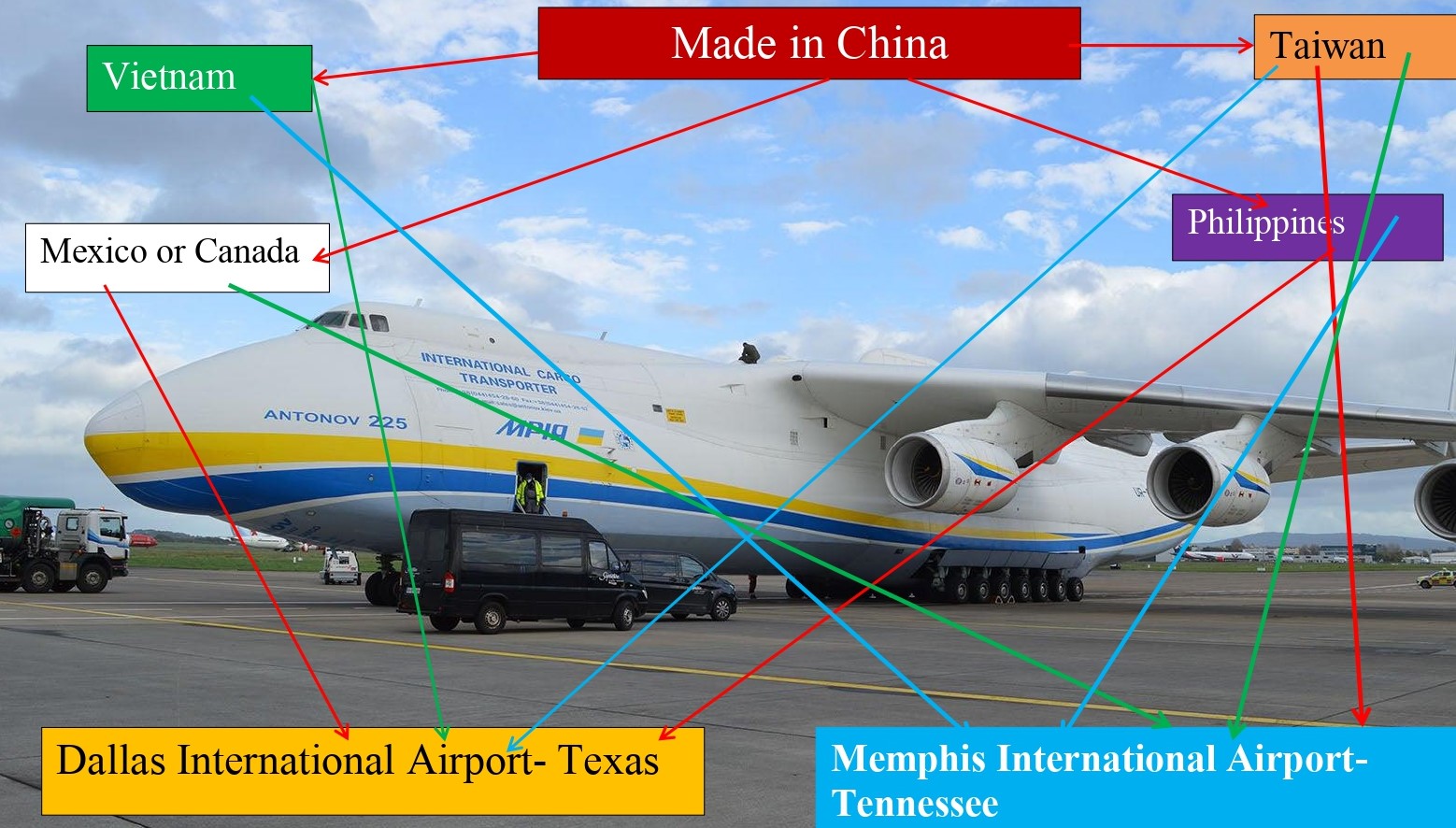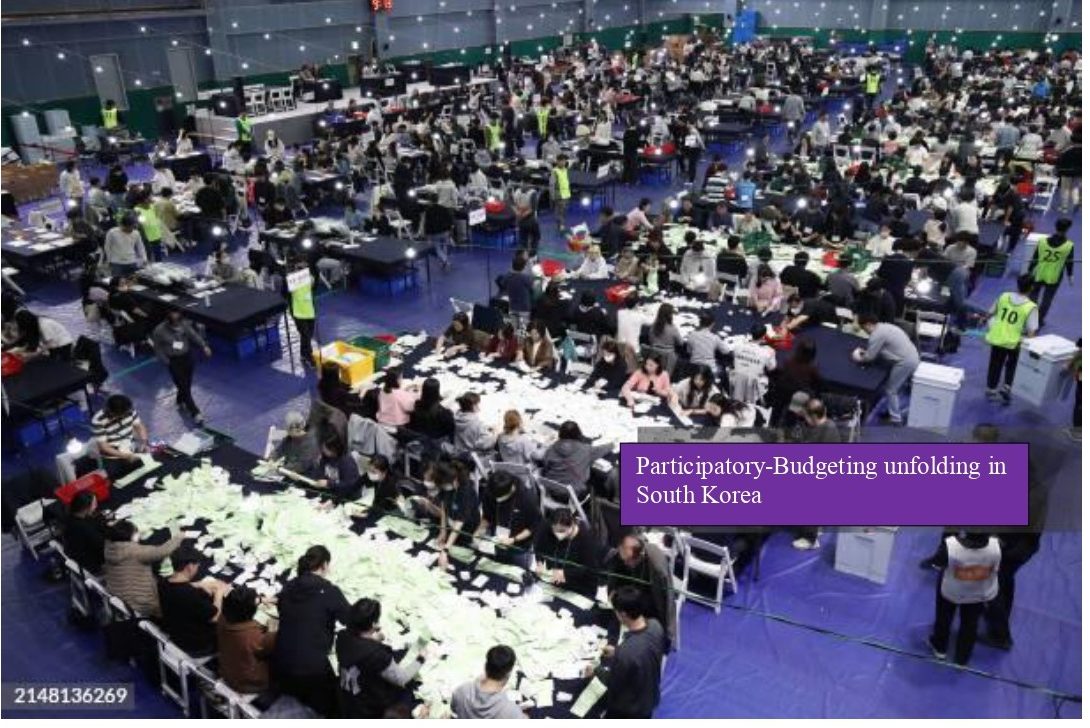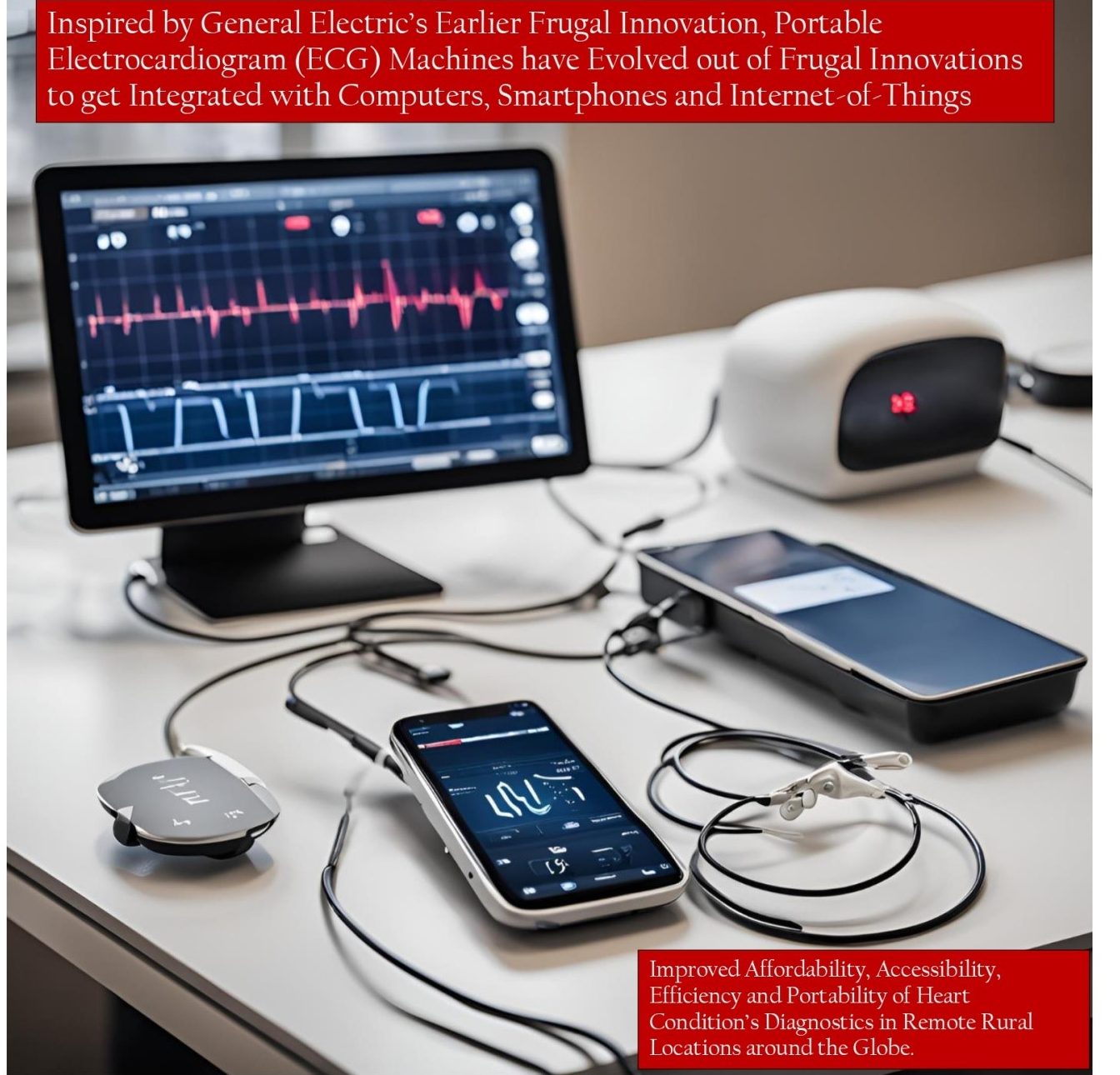By
Raymond Sargeant
Barbados, 6 January 2025
Abstract
Given the challenges of getting different Sargassum products from the Caribbean market to the rest of the global markets, this research seeks to develop a global supply chain management system for improving the Caribbean Sargassum seaweed products’ distribution across the global markets. The study is motivated by the fact that despite Sargassum being widely adopted and integrated as part of the ingredients for producing different products like fertilizers, medical drugs, animal feeds and biogas, the recognition of its economic value across the world is still poor. To respond to such a epistemological gap and challenges, the study used integrative review as one of the qualitative content analysis methods to review and analyse 30 (thirty) articles published on Sargassum innovative uses and the effectiveness of its global value chain activities. As different Caribbean countries strive to reduce the rate of Sargassum’s deposits in their shorelines, beaches and oceans, findings revealed the commonly adopted Sargassum innovative uses to encompass Sargassum’s usage for fertilizer production, biogas, bioethanol and biodiesel production as well as for therapeutic and pharmaceutical products. Due to these various uses of Sargassum extracts and products, integrative review revealed a combination of different approaches that have emerged to commence with Sargassum’s collection from ocean/beaches/shores, Sargassum’s processing for fertilizers, animal feeds, pharmaceutical products, food supplements or for bioplastics to the final Sargassum’s domestic consumption or exportation to the United States, Finland or Canada. But even if that is the case, integrative review still highlighted the major barriers of Sargassum’s production and global value chain flow to often arise from Sargassum’s supply’s seasonal variations, higher costs and Sargassum’s harmful chemical composition. All these uncertainties combine to undermine the wider adoption and usage of Sargassum products around the world. It affects the marketing and the improvement of the usage and flow of Sargassum products from the Caribbean producing counties to other markets around the world (Modestin et al., 2022). To improve the sale and distribution of the Caribbean Sargassum products across the global market, it is recommended that most of the Caribbean businesses will have to adopt the suggested Sargassum’s Global Supply Chain Management Model. However, scientific validity of the suggested model must still be tested by the future quantitative or multivariate analysis studies.
Keywords: Sargassum; Global Supply Chain; Sargassum’s Use and Distribution; Caribbean Market; Global Market
INTRODUCTION
Sargassum is a seaweed or the brown-algae that germinates and grows in the ocean, only to drift to the shorelines upon maturity. Sargassum is common in the Atlantic Ocean, in the areas surrounding several Caribbean countries as well as Africa and Florida in the United States. In the past, Sargassum has existed but not to the scale that it is presently growing and drifting to the Caribbean beaches and shorelines (Tapia-Fuentes et al., 2023). Due to the changes in the Atlantic Ocean as induced by climate change as well as the increment of dust from Sahara Desert in Africa, Caribbean countries are experiencing a surge in the growth of Sargassum seaweed in recent years.
As the growth of Sargassum increases across the Atlantic Ocean, it has induced a combination of different environmental damages (Tapia-Fuentes et al., 2023). In the first instance, the increasing growth of Sargassum in the Ocean has affected fish and other living organisms that live in the sea. Sargassum growth covers the Ocean to block sunlight and oxygen from penetrating through. Such ecological problems are further exacerbated by the fact that as mature Sargassum are swept from the ocean by waves and strong winds to drift to the shorelines, it tends to affect the quality of most of the Caribbean beaches (Dujon, 2022).
Decaying Sargassum produces smell as well as sand conditions that affect the attractiveness of sand beach conditions for tourists. It also clogs beach water to render water unusable. Given the value of the Caribbean beaches for attracting different tourists, Ramcharan (2023) reveals that different Caribbean countries have emerged with various approaches for removing, managing and mitigating the impacts of Sargassum on the Caribbean beaches.
Volunteer groups or sponsored non-governmental organisations have been engaged to remove decaying Sargassum from the beaches. Others have adopted strategies of using chemicals to prevent the growth of Sargassum in conjunction with the use of boats to remove Sargassum from deep sea before they drift to the shorelines (Orozco-González et al., 2022). Though these approaches have contributed to mitigating the environmental damage of Sargassum on the Caribbean tourism sector, questions still arose as to whether the massive amount of Sargassum could be removed and just dumped without putting to any good use.
So far, following the confirmation of Sargassum as the major input for making organic fertilizers, different Caribbean countries are still researching how to effectively utilise Sargassum for making different value adding economic products (Coxworth, 2020). In that process, Ramcharan (2023) reveals the Barbados government to have partnered with the University of West Indies to Create a Sargassum Seaweed Research and Monitoring Centre. The Centre would research and offer an array of new insights on how Sargassum can be used as input for making different other products.
Saint Lucia also introduced Sargassum Seaweed Emergency Plan to allocate resources for the purchase of different machineries that can be used for the removal and collection of Sargassum from its different beaches and shorelines. The plan also aimed to improve investment into research and studies on how Sargassum can be converted into fertilizers. As Mexico deployed satellite technology to aid the monitoring and removal of Sargassum before it reaches shorelines, Jamaica’s Ministry of Economic Growth and Job Creation is exploring how Sargassum can be used for making different forms of animal feeds (CarbonWave, 2023; Orozco-González et al., 2022).
However, as different Caribbean governments explore how to deal with the surging Sargassum growth, Thompson et al., (2019) highlight different Caribbean companies to have also been exploring how Sargassum can be used to create different other products and add economic values for the Caribbean population. In effect, companies like Red Diamond and Algas Organic have been making fertilizers from Sargassum. Others have been making animal feeds, pharmaceutical products and different forms of biogas from Sargassum.
Likewise Heineken is also exploring how Sargassum can be used to increase barley yield. Though Sargassum has gained wider recognition for making products like fertilizers, animal feeds, pharmaceutical products, biogas and biodegradable plastics, these concepts have still been retained only as the Caribbean thing(Orozco-González et al., 2022). Even with the surge in Sargassum supplies, limited efforts have been undertaken to market Sargassum to the global markets outside the Caribbean. Only limited exports have been made to Finland, Canada and the United States.
Due to lack of an effective global supply chain that links Sargassum producers or processors in the Caribbean to the other manufacturers in the world, the concept of Sargassum’s usage as the ingredient for making more valuable products like biogas and fertilizers have only remained the Caribbean thing (Wang & Hu, 2016). This has caused wastage of enormous amount of Sargassum that could have been exported to the other countries to generate profits and foreign exchange earnings for various Caribbean governments and businesses(Herjevik & Wed, 2022). It is nexus of such challenges that motivate this study to conduct an analysis on Sargassum uses, production and challenges.
Through such analysis, the study aims to discern the global supply chain management system that can be adopted to improve the seamless flow of Sargassum products from the Caribbean to various markets around the world. To accomplish that, the study first examined the core literature on global supply chain management prior to using integrative review to analyse studies conducted on Sargassum’s innovative uses, effectiveness of Sargassum’s value chain, barriers of Sargassum’s production and its global value chain flow from the Caribbean to the global market.
LITERATURE REVIEW
Global supply chain management system connotes the strategic process of planning, organising, leading and controlling how goods are procured from local producers or manufacturers and distributed to the designated wholesalers, retailers and consumers around the world (Tukamuhabwa et al., 2021). It is the systematic process that requires the effective management of the activities’ flow from the producers and suppliers of inputs to the manufacturing points and subsequently the storage and distribution of the finished products to the final consumers. Global supply chain management system goes hand in hand with the strategic logistics management process that requires demand forecasting and analysis so as to aid the balancing of supply with demand (Brown, 2024).
Global supply chain system is an important part of business that improves product availability. This bolsters the overall customers’ satisfaction with the services being offered by the business. It is also an essential part of the business that improves the analysis and balancing of demand with supply. This minimises risks of shortages that can affect the business’ sales, revenue, profitability and returns on shareholders’ value. Efficacy of global supply chain system can also bolster a business’ competitiveness for the reason that ensuring the constant availability of the required goods as contrasted to shortages bolsters a business’ overall competitiveness (Maat et al., 2020).
In ensuring the efficient movement of goods from the points-of-manufacture to the points-of-sale, the global supply chain management system uses an interlinked system integrating several players and actors. It uses the interlinked system that integrates critical players and actors like suppliers of inputs, manufacturers, transporters that move inputs and finished products to points of sale, warehousing team that manage the storage and preservation of the quality of the goods that are in transit, the security team that ensures product safety and the clearing and forwarding teams that ensure relevant taxes are cleared for the goods to freely move from one custom points to another (Linda & Thabrani, 2021).
Global supply chain management system also integrates the management of activities and demands of multitudes of wholesalers and retailers that are distributed across the world. Major actors in the global supply chain management system encompass freight forwarders, non-vessel operating carriers, consolidators, custom house brokers, export management and trading companies, shipping associations, shipbrokers and ship agents and export packing companies (Palamariu, 2024).
Freight forwarders are middlemen who link shipping companies with producers that aim to ship their goods to foreign customers who are in different designated parts of the world. Non-vessel operating carriers are the operators that buy shipping space on the inland carriers and resell to the shippers at a marked-up price. It manages the shipping of the required goods from the producer to the shipping ports and from the final destination port to the foreign customers’ warehouses or any other designated points for delivery (Ward, 2024). Consolidators are the players in the supply chain management system that mobilise and combine smaller shipments that can fill the entire ship so that they can bargain for discounts from shipping companies.
In the global supply chain management system, customs house brokers are the agents in the customer system. Customs house brokers ensure the system has all the required documentations and that all the required custom duties and import taxes have been paid up for the goods to be seamlessly cleared by customs (Leo et al., 2015). Export management companies are the actors that assist shippers with the complex expert issues that are associated with the exportation of different goods to different countries.
Export trading companies are the players that spot and buy imports that can be resold or re-exported to the other foreign markets. Shipping associations are often formed by smaller shipping companies to bargain and gain from shipping terms and conditions that are similar to the approaches that larger shipping companies use(Ferdows, 2018). Shipping association between smaller shipping companies aim to minimise the exploitation of smaller shipping companies by standardizing the rates for shipping to different locations.
In the global supply chain management system, shipbrokers and agents are the players that negotiate and bring exporters and shippers into agreement on the terms for how certain goods can be transported from one destination to another. Export packing companies are the actors in the global supply chain system that do the packing of different cargos to ensure that all the goods reach the final consumer without any damage (Durach et al., 2017). In addition, the global supply chain system must also integrate the information technology support system that manages the tracking and monitoring of the process of transporting inputs and finished goods from points-of-manufacture to points of sale. Such a view is substantiated in Free Documentary’s Video below on DHL global logistics management.
The emergence of the global supply chain system became more prominent with the invention of the first ocean-going vessels. These ocean-going vessels influenced the shipping, transportation and delivery of goods like British tea or cotton and cocoa from Africa to Europe or Asia in the 17th and 18th Centuries (Ferdows et al., 2016). However, as the world liberalised and de-regulated to eliminate more trade barriers, trade and movements of inputs and finished goods across the world increased exponentially to require the effective management of the flow of goods around the world to bolster a firm’s competitiveness.
Besides the creation of the World Trade Organisation (WTO), increased trade liberalization and de-Regulation emerged from the formation of major trading blocs like ASEAN (Association of South East Asian Nations), APEC(Asia-Pacific Economic Cooperation, EU(European Union), BRICS (Brazil, Russia, India, China and South Africa, and NAFTA(North America Free Trade Agreement) (Joseph et al., 2017). Increasing free trade caused not only the increment of global trade, but also increasing competition in the global market.
Increasing competition from different companies meant that partnership with the shippers and logistics management companies would aid the faster movement of goods from one place to the other points that they are required. As more efficient air transport as well as ocean transport emerged, the notion of the global supply chain became even more meaningful (Kembro & Norrman, 2020). This is because movement of inputs or finished goods from one point to another became even more cheap and efficient for responding to the needs and demands of different consumers around the world.
With the improvement of computer and information technologies as well as the emergence of Internet technology that improved the degree of integratedness of the world, global trade increased to necessitate the movement of multitudes of goods from different multitudes or points to the areas of the world where such inputs or finished goods are required (Norrman & Wieland, 2020). Just like any other management function, global supply chain management is not a random process, but a logical systematic process that requires the use of an effective plan.
Global Supply Chain Management Plan
Global supply chain management plan is a strategic framework that enhances the effective management of the movement of goods from the points of production through the storage system to the final consumer (Chen, & Chen, 2018). It is the premeditated course of actions of how the global supply chain management activities must be accomplished in the way that influences the attainment of the desired business goals and objectives.
The global supply chain management plan reflects partners that will be engaged as well as costs that the business is prepared to meet in order to facilitate the efficient movement of goods from one point to another (Olhager & Feldmann, 2018). An effective global supply chain management plan improves operational efficiency. It enables a business evaluates, identifies and mitigates the potential risks that can disrupt the efficient movement of goods to the final consumers.
It also enables the business gather and analyse all the required global supply chain data to discern how wastes in the process can be eliminated to improve the shipment of all the required goods in the cost-effective and more profitable ways (Alfalla-luque et al., 2018). However, to achieve such values, the development and use of an effective global supply chain system requires the accomplishment of systematic activities that encompass:
- Defining Clear Goals and Objectives
- Thorough Global Market Analysis
- Creation of an Efficient Global Supply Chain Network
- Suppliers and Partners’ Management
- Inventory and Demand Management Strategies
- Defining Supply Chain Performance Metrics and Indicators
Defining clear goals and objectives requires the business to conduct analysis and develop the global supply chain system that influences the achievement of the desired business goals and objectives (Olhager & Feldmann, 2021). The goals and objectives of the business’ global supply chain system must seek to lower costs, improve customer satisfaction, operational efficiency, inventory management and business sustainability. To achieve these, the development of the goals and objectives of the business’ supply chain system must be set only after evaluating and understanding market demands, customer expectations and the business’ overall competitive positioning.
However, for such business goals and objectives to be attained, it must also be accompanied with constant thorough global market analysis. Constant thorough global market analysis is essential for enhancing the understanding of the unfolding global dynamics. This enables the business to constantly analyse and modify its supply chain management capabilities to bolster its overall performance in the global market (Yan et al., 2015).
With such insights, it becomes easier for business executives to discern the kinds of the global supply chain network that must be created to bolster the business’ overall effective performance in the international market. For the business’ global supply chain management system to be effective, it is essential for the business executives to create and utilise an efficient global supply chain network (Pashaei & Olhager, 2019). It requires the evaluation, identification and creation of the networks of critical actors in the global supply chain system like the suppliers, transporters, shippers, storage and warehouse operators, clearing and forwarding agencies, custom agents, buyers and sellers of different required items that are scattered across the world. It is through such a global network that the business can be able to optimize it global sourcing, manufacturing, warehousing and distribution structure (Prataviera et al., 2020).
The engaged suppliers and partners must also have the required technologies and operational approach and culture that permit the use of collaborative approach in the accomplishment of the required global supply chain management activities. However, such initiatives must also be accompanied with the introduction and use of a more robust inventory and demand management strategies (Tukamuhabwa et al., 2021). Inventory and demand management strategies must be directed towards ensuring the effective management and response to the changes in market needs and demands. Inventory and demand management strategies must be aimed at balancing demand with supply (Palamariu, 2024). It must ensure the business has adequate inventory for meeting the unfolding demands.
However, for the established global supply chain management system to influence the attainment of the desired outcomes, it must be accompanied with the use of the appropriate performance metrics. Clarity of performance metrics ensures all the activities are being accomplished according to the designated global supply chain management system (Ferdows, 2018). Clear designation of the global supply chain performance metrics and indicators aids the analysis of whether the accomplishment of different activities is enabling the attainment of the desired goals and objectives of the global supply chain system.
To accomplish that, the metrics or key performance indicators must be set in the areas encompassing cost-effectiveness, operational efficiency, on-time delivery, customer satisfaction, inventory management, competitiveness and business sustainability (Maat et al., 2020). Evaluations of such KPIs enhances the identification of the areas of problems that must be addressed and improved to render the entire global supply chain system more effective for aiding the attainment of the desired goals and objectives of the business. However, it is not only the existence of an effective supply chain management plan that influences the effectiveness of the global supply chain management system, but also certain critical components for an effective global supply chain system (Linda & Thabrani, 2021).
Components of Global Supply Chain Management
Conventionally, most theories construe a business’ global supply chain system to constitute of six main components encompassing logistics management, supply chain coordination, customer orientation, competitor orientation, operations management and supply chain management (Leo et al., 2015). However, some of the theories posit these six components of an effective global supply chain system to be aggregated under four main components that encompass:
- Marketing
- Logistics Management
- Supply Management
- Operations Management
The marketing component of the global supply chain system refers to the framework that deals with the evaluation of the market dynamics and promotion to ensure that information about the business’ products reaches all parts of the world (Ferdows et al., 2016). It is the strategic process of evaluating and responding to the dynamics and the constantly changing needs and demands of the customers. It is through such initiatives that the business is able to ensure that its global supply chain system creates and delivers the desired values to influence the improvement of the overall level of customer satisfaction and loyalty.
Besides marketing domain, logistics management is also the components that influence the effectiveness of the business’ global supply chain management system. Logistics management manages the seamless flow of goods and logistics from one point to another. Logistics management ensures the required actors and partners like transporters, clearing and forwarding agents and custom agents are brought on board to ensure the cost effective and efficient movement of goods from points-of-sourcing to the final points-of-sale or the final consumers(Joseph et al., 2017).
Supply management is the strategic process of planning, organising, leading and controlling activities to ensure the required goods or inputs are sourced from the appropriate suppliers and delivered to where they are required (Alfalla-luque et al., 2018). It deals with the evaluation of customer needs and the selection of the suppliers that can offer the best quality at the best lowest prices. Supply management does not just deal with the selection of the suppliers with the best quality for the best lowest prices. Instead it also deals with the evaluation of the suppliers that have the required quantities of goods as well as technology and resources to effectively respond to orders in case the changes in customer demands require the business to place more orders (Kembro & Norrman, 2020).
However, these must be accompanied with the use of an effective operations management system as part of the components of an effective global supply chain management system. Operations management is the strategic process of ensuring the system put in place is influencing the improvement of the overall effectiveness of the global supply chain management system. It ensures that all the supply chain related activities are effectively and efficiently accomplished to influence the attainment of the desired business goals and objectives(Norrman & Wieland, 2020).
To achieve that, operational management of the global supply chain management system requires higher levels of integration in the six areas that encompass customer integration, internal integration, material/service supplier integration, technology/planning integration, measurement integration and relationship integration.
The effectiveness of customer integration is measured by segmental focus, relevancy, responsiveness and flexibility. All these influence the overall effectiveness of the global supply chain management system. However, theories and literature still indicate the effectiveness of the global supply chain management system to often be undermined by a combination of different challenges and limitations (Olhager & Feldmann, 2021).
Challenges of Global Supply Chain Management
Besides lack of an effective supply chain management strategy, theories and literature suggest the challenges of global supply chain system can also arise from natural disasters and poor risk management, unexpected delays or poor cost controls (Wong et al., 2017). Other impediments may emanate from poor collaboration and lack of usage of the appropriate information technologies, poor forecasting, and sudden increment of freight prices, port congestion and incompatibilities arising from the variations of the operations of the partners that have digitized and those that have not digitized. Among such challenges, lack of an effective global supply chain strategy is one of the challenges affecting the effectiveness of some global supply chain management systems (Shunko et al., 2017).
In most cases, most global supply chain management activities are accomplished without the designation and use of the appropriate strategies. The motive is usually to get goods transported from sellers to the designated part of the world where goods are required. Unfortunately, such activities are often accomplished without thorough evaluation of how wastes and costs in the value chain can be significantly controlled to unlock the desired cost advantages (Pashaei & Olhager, 2015). The implication is that some of the processes of moving certain goods tend to become more expensive.
To cover such higher costs, sellers of different goods often tend to shift burdens to buyers. This affects the business’ overall competitiveness in the international market. As these affect cost controls, it also undermines discerning how different activities and players in the entire global supply chain management system must be managed to deliver the desired values to customers and businesses (Pashaei & Olhager, 2017). This affects activities’ integration to undermine the seamless flow of goods and services from suppliers to customers.
Lack of the appropriate global supply chain management strategy also affects the effectiveness of warehouse management as well as the assessment of the technologies that are required for the global supply chain system to create and deliver the desired outcomes. Yet as inventory management is affected, lack of an effective supply chain management strategy also affects the capabilities of the business to conduct relevant market analysis and balance supply with demand (Pashaei & Olhager, 2019; Prataviera et al., 2020).
These are often exacerbated by delays that arise from the variations of different custom practices to affect the seamless flow of goods across different countries to the final destinations. As reflected in NBC’s video below, such challenges are not different from the limitations that are affecting the development of an effective Sargassum’s global supply chain management system.
It is in that context that integrative review was used as a qualitative content analysis to discern the improvement initiatives that must be adopted.
METHODOLOGY
Integrative review refers to the qualitative content analysis that focuses on reviewing and analysing all kinds of studies conducted on a particular topic with the motive of identifying new knowledge gaps and insights that can inform future studies and industry practices (Lubbe et al., 2020). In this study, the use of integrative review is influenced by the fact that despite the avalanche of studies that have been conducted on Sargassum’s innovative uses as well as its mitigation strategies in the Caribbean market, only limited studies have evaluated how the Caribbean Sargassum can be marketed and sold to the whole world to generate revenues for the Caribbean businesses and government as well.
Through the use of integrative review to analyse the barriers of Sargassum’s production and its global value chain flow, it is anticipated that the study will gather relevant information and insights that would aid the development of a global supply chain management model for improving the Caribbean Sargassum’s distribution across the global markets.
Even if integrative review is one of the methods for comprehensive literature review or qualitative content analysis, it still differs from systematic review or meta-analysis (Dhollande et al., 2021). Meta-analysis is a quantitative content analysis that focuses on evaluating and reviewing only the peer-reviewed quantitative studies conducted on a particular topic. This differs from the systematic review that focuses only on examining and extracting information from the published peer reviewed qualitative studies. Unlike systematic review and meta-synthesis, integrative review evaluates all relevant studies as well as online articles published on a particular topic (Dhollande et al., 2021).
Integrative review aims to extract as comprehensive information as possible about the topic so as to identify a new gap and knowledge that can influence future business practices and studies. It is such values that motivated the use of integrative review in this study for the reason that by evaluating all information about Sargassum’s usage in the Caribbean, the study would be able to extract critical information on the effectiveness of Sargassum’s value chain activities as part of its global supply chain management activities.
The study would also be able to analyse the barriers of Sargassum’s production and its global value chain flow. This would enable the study to emerge with new information and insights that can be used for the development of a global supply chain management model for improving the Caribbean Sargassum’s seamless distribution across the global markets. In the quests to achieve that, the process of integrative review was structured according to four steps encompassing literature search, extraction, quality assessment, analysis and presentation of the integrative review outcomes (Evans, 2007; Lubbe et al., 2020).
Literature Search
In the first instance, literature search entailed the formulation of fundamental research questions that would guide the evaluation of relevant literature that must be extracted. In that process, the literature search was aimed at responding to the fundamental research questions that sought to analyse:
- What are the Sargassum innovative uses in the Caribbean market that influence its wider adoption in the global market as a valuable economic product?
- How effective are Sargassum’s value chain activities as part of its global supply chain management activities?
- What are the barriers of Sargassum’s production and its global value chain flow?
- What global supply chain management model can be developed and adopted for improving the Caribbean Sargassum’s seamless distribution across the global markets?
Once the literature search question was developed, the next step entailed the formulation of keywords that would guide the process of evaluating of which information to include or exclude. The critical key words that were used encompassed “Sargassum”, Sargassum’s Innovative Uses”, “Steps for Processing Sargassum”, Methods for Extracting and Processing Sargassum”, “Sargassum’s Value Chain System”, Sargassum’s Global Value Chain System”, “Limitations of Sargassum’s Global Value Chain System”, “Global Supply Chain System” and “Initiatives for Improving Sargassum’s Global Supply Chain System”.
Once the research questions and keywords were formulated, the literature search process used search engines like Google, Web of Science, SCOPUS, PubMed and Embase to search and evaluate all the studies and articles that examine critical topics about the use of Sargassum, Sargassum’s extraction methods, Sargassum’s value chain analysis, Sargassum’s global supply chain systems and its limitations. Once the studies or articles were being evaluated for inclusion, the inclusion criteria reflected below were used in the analysis of the studies and articles that must be included or excluded.
Selection Criteria
Since the study was using integrative review, all forms of peer reviewed and non-peer reviewed articles were extracted and used in the analysis of the issues that influence or even constrain the effective movement of Sargassum products from the Caribbean market to the other markets of the world (Hopia et al., 2016; Kutcher, & LeBaron, 2022). Studies and articles that did not reflect contents that are relevant to the research questions or keywords were excluded. The focus was on articles and studies that were published in the period between 2014 and 2024. Articles or studies that were not published in English language were excluded. As necessitated by the research questions, the selected articles or studies had to reflect impressive contents that respond to issues like the use of Sargassum, Sargassum’s extraction methods, Sargassum’s value chain analysis, Sargassum’s global supply chain systems and its limitations. Designing the criteria for selecting the articles or studies were accompanied with the accomplishment of the actual data extraction process.
Data Extraction
Once an article or a study was identified to be relevant, the used data extraction process entailed reading the title, the abstract and contents of the articles to discern whether they offer insights that are relevant to issues of developing Sargassum’s global supply chain system (Oermann & Knafl, 2021). However, studies that did not have accessible full contents were excluded. The effect is that in the first instance, the data extraction process extracted relevant articles and studies on Sargassum’s innovative uses in the Caribbean market that influence its wider adoption in the global market as a valuable economic product. This was followed by the evaluation of studies that explore the effectiveness of Sargassum’s value chain system as part of its global supply chain management activities.
In addition to extracting articles and studies that examine the barriers of Sargassum’s production and its global value chain flow, the data extraction process also extracted studies that offer insights on the global supply chain management model that can be developed and adopted for improving the Caribbean Sargassum’s distribution across the global markets. All these led to the extraction and inclusion of 30 (thirty) studies that examine different aspects of Sargassum’s usage in the Caribbean market. Though the 30 (thirty) articles were used in the study, they were still subjected to quality assessment before analysis.
Quality Assessment
To ensure that the study was relying on valid, reliable and quality information, the process of quality assessment entailed the evaluation, identification and elimination of the duplicated studies or articles that were already included in the study (Toronto & Remington, 2020). This was followed by the arrangement of all the articles alphabetically to enhance the identification and elimination of all the articles. For most of the peer-reviewed academic studies, Mirza and Jenkins’ Quality Assessment Checklist was used as the basis for evaluating the clarity of the aim and objectives of the selected studies. Such a criteria was also used for evaluating whether the study was based on valid and reliable sample population as well as whether a more valid research instrument was used in seeking to ensure that the study extract and use only relevant information.
The other initiatives entailed the evaluation of whether the selected studies adhered to the required ethical principles during the accomplishment of the research process. For the other non-academic or grey literature that were included in the study, the initiatives were undertaken to assess whether the selected articles offered alternative better insights about the issues concerning the development of a more effective Sargassum global supply chain management system (Whittemore & Knafl, 2005; Whittemore, 2007). Even if the articles were included for analysis, those that did not meet the required quality criteria were still removed from the pool of the articles from which the analysis in the study would be based. It is such approach that led to the selection and analysis of only the selected 30 (thirty) articles or studies.
Data Synthesis
Data synthesis is the process of analysing, extracting, relating and linking themes and clusters of their subthemes and the accompanying narratives to discern how they offer coherent explanations about the concept being evaluated (Whittemore, 2007). In this study, data synthesis entailed thorough reading and re-reading of each of the selected 30 (thirty) articles. This was followed by the extraction of themes, subthemes and chunks of the accompanying narratives from each of the selected 30 (thirty) articles.
As such a process was being used, the focus of the study was the extraction of themes, subthemes and their explanatory chunks of texts on the innovative uses of Sargassum in the Caribbean market that influence its wider adoption in the global market as a valuable economic product. Subsequently, the study evaluated and extracted themes, subthemes and their accompanying narratives that explain the effectiveness or ineffectiveness of the Caribbean Sargassum’s value chain activities as part of its global supply chain management activities.
As the study extracted themes, subthemes and their accompanying narratives on the barriers of Sargassum’s production and its global value chain flow, all these influenced the identification of gaps and the extraction of new insights that enhanced the development of the global supply chain management model that can be adopted for improving the Caribbean Sargassum’s distribution across the global markets. In that context, the details of the findings are as evaluated below.
FINDINGS
In line with the research objectives and questions, analysis and presentation of findings are structured according to three subsections encompassing:
- Sargassum innovative uses as a valuable economic product
- Effectiveness of Sargassum’s value chain activities
- Barriers of Sargassum’s production and global value chain flow
Details are as follows.
Sargassum’s Innovative Uses in Caribbean Market
As different Caribbean countries strive to reduce the rate of Sargassum’s deposits in their shorelines, beaches and oceans, integrative review of studies like Wang et al., (2018) and López-Contreras et al., (2022) indicated the commonly adopted Sargassum innovative uses in the Caribbean market to encompass:
- Sargassum’s Usage for Fertilizer Production
- Sargassum’s Usage for Biogas, Bioethanol and Biodiesel Production
- Sargassum’s Usage for Therapeutic and Pharmaceutical Products
Such themes are also accentuated in the views expressed in UNEP’s (UN-Environmental Programme) Video below
Details of these themes are evaluated as follows.
Sargassum’s Usage for Fertilizer Production
In a study conducted on “Pelagic Sargassum for Energy And Fertilizer Production in the Caribbean”, Thompson, Young and Baroutian (2019) reveal that due to the devastating effects of Sargassum on the Caribbean coastlines as well as on the coastlines of Florida, Gulf of Mexico and West Africa, a lot of innovative initiatives have been adopted to discern how Sargassum can be used for other purposes.
In such initiatives, they noted that Sargassum has been found to be quite essential as the input for manufacturing fertilizers. Sargassum has a lot of nutrients like nitrogen, phosphorus and potassium that render it one of the best inputs for organic fertilizer making. Sargassum tends to offer the best source of fertilizers as compared to chemical fertilizers that often do not provide the best nutrients for plants.
In a study conducted by the University of the West Indies, Ramcharan (2023) confirms Sargassum to increase soil fertility to bolster the increment of crop yields. Yet since Sargassum has a lot of organic nutrients, it tends to be cheaper and less hazardous as compared to chemical fertilizers that are often expensive and risky due to some of the dangerous chemicals that can affect soil fertility after some years.
Due to its established impacts for improving soil fertility and productivity and yields of crops like cassava and bananas, Ramcharan (2023) reveals that a Caribbean-based company known as Algas Organics has enormously invested in the establishment of fertilizer production plant that uses Sargassum as the source of inputs to respond to the surging demand of the Caribbean farmers that now prefer to use Sargassum fertilizers and not chemical fertilizers.
In such narratives, Thompson et al., (2019) share similar views with CarbonWave (2023) that Sargassum as environmentally-friendly boosters to agricultural yield tends to reduce nitrogen dependency. Since farmers often apply about 90% of nitrogen fertilizers per hectare, the use of Sargassum fertilizers tend to reduce the overall costs and negative environmental impacts of nitrogen fertilizers that are commonly found in chemical fertilizers. Fertilizers made from Sargassum seaweed also boost the uptake of nutrients by plants to enhance the availability of essential elements that are ready to be absorbed by soil.
Besides improving how plants metabolize nutrients to improve the overall health of plants and yields, Sargassum fertilizers also improve plants’ digestion of micronutrients since it has multivitamin and metabolism enhancer for crops. CarbonWave (2023) further reveals that Sargassum fertilizers are more preferred by farmers because they have higher contents of zinc that plays important roles in photosynthesis, potassium that maintains plant-water balance to improve plant’s disease resistance, iron that enhances photosynthesis, magnesium that aids the converting of light to energy, silicone that protects plants from insect attacks, diseases and environmental stress and calcium that improves membrane integrity in plants.
Due to the values that Sargassum offers as the fertilizers for agriculture, Dujon (2022) notes that several firms in Florida, the United States are increasingly investing to convert millions of Sargassum seaweed tons into high quality and innovative natural fertilizers. About 5000 acres of agricultural farms are already using Sargassum fertilizers. Dujon (2022) highlights that most of the countries in the Caribbean are increasingly getting relieved from the stress of how to deal with a surge in Sargassum seaweed that had affected beaches, marine environment and ecosystem as well as the attractiveness of the Caribbean tourism.
In effect, the conversion of Sargassum seaweed into fertilizers has not only saved beaches and the marine environment, but also reduced the cost of agricultural fertilizers whilst increasing crop yield to improve food security, create more jobs and reduce the dependence of American farmers on imported chemical fertilizers. Citing a study by the University of South Florida, Dujon (2022) notes that since about 10 million tons of Sargassum seaweed is floating across the Caribbean, it seems to offer a more sustainable source of organic fertilizers. However, Johnson and Engel (2022) caution that a study conducted by WWF-Mexico and STINAPA-Bonaire found vegetables grown in soil fertilized using Sargassum fertilizer to contain higher levels of arsenic and cadmium as well as heavy metals that are toxic and harmful to humans and animals.
Other studies hold the view that there is no safe or unsafe level of arsenic in vegetables. But while citing CONTAM’s (2010), Johnson and Engel (2022) still suggest the use of Sargassum fertilizers must be avoided. This is because longer ingestion of inorganic arsenic is established to be associated with the causes of skin lesions, developmental toxicity, cancer, cardiovascular diseases, neurotoxicity, diabetes and abnormal glucose metabolism. Despite such warnings, Sargassum is still widely embraced as the new important input for the production of organic fertilizers. In addition, Sargassum is also being adopted as the source of biofuels.
Biogas, Bioethanol and Biodiesel Production
As the surge in Sargassum seaweed growth, deposition and decomposition across the Atlantic Ocean and in the Caribbean beaches become issues that most of the Caribbean countries are grappling to deal with, Herjevik and Wed (2022) reveal that several studies and companies have explored and confirmed Sargassum to be quite essential for creating biogas.
In the study sponsored by Swedish International Development Cooperation Agency on “Biogas production with Sargassum algae in Grenada”, Herjevik and Wed (2022) highlight that it was confirmed that brown macroalgae as one of the forms of Sargassum seaweed produces higher energy as compared to the other macroalgae varieties to suggest that brown macroalgae can generate more methane gas. Sargassum also produces methane at quite a lower production cost because it has structures that have low lignocellulose.
Such a finding was found to be essential for luring more companies to consider generating biogas from Sargassum. This would reduce problems that Grenada just like the other Caribbean countries are experiencing from the surge in Sargassum’s growth. As Sargassum’s growth increases, it tends to be swept by ocean waves to the shores. Subsequently, they decay to cause smell that affects health as well as the quality of the beach tourism and recreational activities. Given the high electricity and fossil fuel costs in Grenada, Herjevik and Wed (2022) argue that the conversion of biogas from Sargassum can enable Grenada government deal with the challenge of higher costs of fossil fuel importation.
Just like Herjevik and Wed (2022), Orozco-González et al.,’s (2022) study also found Sargassum to be an important input for the production of biogas. Through the use of hydrothermal pre-treatment as integrated with anaerobic co-digestion processes, Sargassum just like agricultural wastes was found to be easily convertible into biogas that offers the sources of renewal clean energy for lighting, cooking and powering industrial plants. In the event of shortage of agricultural inputs, Sargassum which is noted to become increasingly abundant is also found to be an important substitute that can be used for the production of bioethanol.
Originally, Orozco-González et al.,’s (2022) explain that bioethanol is regarded as the form of alcohol which is found in types of plants like sugar cane, sugar beet and grains like corn that have richer levels of cellulose. Given the increasing quests to innovate substitutes for gasoline cars, ethanol produced from Sargassum is increasingly being considered as the potential inputs for increasing the production of ethanol which is often constrained by lack of adequate wastes from agricultural products. Such a finding echoes views in IEN’s video below.
Orozco-González et al.,’s (2022) reveal that Sargassum also generates lipids and fatty acids that are being considered for biodiesel production. Besides Sargassum’s usage for biogas, bioethanol and biodiesel production, outcomes of integrative review also revealed Sargassum to be quite essential in the production of certain therapeutic and pharmaceutical products.
Therapeutic and Pharmaceutical Products
In a study conducted on “Therapeutic Potential and Health Benefits of Sargassum Species”, Yende et al., (2014) found Sargassum seaweed to have several therapeutic and pharmaceutical benefits. Sargassum constitutes of species like tropical and subtropical brown macroalgae. It also possesses rich sources of nutritious and bioactive compounds like carotenoids, vitamins, dietary fibers, minerals and proteins. Sargassum further has certain biologically active compounds like flavonoids sargaquinoic acids, terpernoids, sterols, polyphenols and sulfated polysaccharides and pheophytine. As Yende et al., (2014) reveal, these biologically active compounds are essential for treating and curing bronchitis, infections, fever, inflammation and laryngitis.
Sargassum has proved effective for traditional medicine. It provides various biological properties like antioxidant, anti-microbial, anti-inflammatory, immune-modulatory, anti-viral activity and fibrinolytic activities. Though further research is still being conducted, these suggest Sargassum has critical biological properties that can be essential for making different medical and pharmaceutical products. These can respond to an array of different ailments and diseases that the modern global population is still struggling to eradicate from earth surface.
In terms of its therapeutic benefits, Sargassum has already proved effective as part of the essential ingredients for making medical drugs that treat complicated health disorders like diabetes mellitus, cancer, inflammatory diseases and age-related degenerative conditions. Yende et al., (2014) further note Sargassum to also offer biologically active properties for making medicine that treat chronic complicated mental disorders. Such chronic mental disorders may arise from dementia that affects thinking, memory, language, calculation and comprehension. Methanolic extracts from Sargassum showed positive effects of treating complicated dementia arising from Parkinson’s disease, Myasthenia gravis and Alzheimer’s disease.
In terms of cancer treatment, cold water extracted from Sargassum (oligocystum) has proved to be one of the effective anti-cancer activities that prevent tumor cells’ replication in cancer patients. It applies to cancer conditions triggered by smoking, alcohol consumption, exposure to chemicals, radiation or inherited.
Butonic extracted from Sargassum during winter seasons is essential for treating inflammations that may cause discomfort to patients suffering from different diseases and health conditions. Besides the medical and pharmaceutical values of Sargassum, Ramcharan (2023) who evaluated the innovative uses of Sargassum in the Caribbean also indicates Sargassum to be essential for usage in the manufacturing of cosmetics as well as animal feedstock.
Sargassum is adopted for the manufacturing of livestock feed. Studies from Mexico confirmed Sargassum to offer supplements that increase weight gain and feed conversion efficiency for lambs (Carrillo-Domínguez et al., 2022). Since most of the Caribbean countries still struggle with higher prices and costs for the largely imported livestock feed, it implies supplements from Sargassum can now be good substitutes.
Regarding cosmetics, Ramcharan (2023) reveals the University of Havana study to have established Sargassum to offer critical ingredients for making skincare products that reduce inflammation whilst also protecting against UV damage. Sargassum contains an extract known as alginate which is used for making biodegradable plastics or bioplastics. Given the increasing challenges of environmental management, bioplastics can offer more effective alternative solutions to the traditional environmentally unfriendly plastics.
Due to these various uses of Sargassum extracts and products, integrative review revealed a combination of different approaches to have emerged to explain how processed Sargassum flows through its value chain from the Caribbean market to the global markets.
Sargassum’s Value Chain Activities
Sargassum’s value chain activities commences with Sargassum’s collection from ocean, beaches and shores, processing for fertilizers, animal feeds, pharmaceutical products, food supplements or for bioplastics and final domestic consumption or exportation to the United States, Finland or Canada.
Sargassum’s Collection from Sea, Beaches and Shores
Depending on what Sargassum will be used for making, the methods for Sargassum collection from ocean, beaches or shores may differ. If Sargassum is being collected for making agricultural fertilizers, animal feeds or biodegradable plastics, the collection method would entail the gathering and removal of Sargassum that inundates and gets deposited at different Caribbean beaches and the ocean shorelines. This is the most cost-effective method as the fertilizer making businesses just wait for the ocean tides, waves and winds to bring Sargassum from deep sea and deposit it at the shoreline or the Caribbean beaches.
In some cases, fertilizer making companies may also partner with government agencies and other non-governmental organisations that specialize in the removal of Sargassum from the shorelines or beaches as part of the environmental management programme. It is tons of Sargassum which is often deposited at the ocean shorelines.
However, since businesses are increasingly gaining interests in the usage of Sargassum as an important input for fertilizer making, some organisations now days use forecasting to discern the changes in ocean tides and waves as well as the direction that it will sweep Sargassum. This renders it easy for companies that make fertilizers from dead or decaying Sargassum to discern the shorelines to focus on for the extraction or removal of Sargassum.
If the business is not about making fertilizers, but pharmaceutical products, animal feeds, food supplements or cosmetics, then the deep sea harvesting of Sargassum is one of the methods that would be used for gathering Sargassum. Once Sargassum is collected from the beaches and shorelines or harvested from deep sea, it is subjected to processing as part of the critical activities in its value chain activities.
Sargassum’s Processing
Just like Sargassum’s collection method, the processing of Sargassum will also depend on whether Sargassum will be used for making fertilizers, bioplastics, adobe bricks, chipboard, cement additive, biosorbent, charcoal bricks, livestock and fish feeds. It also varies whether Sargassum is being used for biofuels or pharmaceutical products and food supplements.
For mainly biofuel and pharmaceutical products that require some chemicals from Sargassum, Dulanlebit and Hernani (2023) reveal that Sargassum as a seaweed has physiochemical properties and hydrocolloids like alginate, carrageenan and agar that must be extracted and purified as hydrocolloids.
To extract the desired type of hydrocolloids, the conventional methods focus on solvent extraction and green extraction methods use microwaveassisted extraction, supercritical fluid extraction, ultrasound-assisted extraction, reactive extrusion and pressurized solvent extraction.
Due to the increasing embracement of different products that are made from Sargassum ingredients, different companies are emerging in the Caribbean to consider the use of Sargassum for different inputs’ manufacturing processes. In Mexico, Sargassum is used for making an array of products of which some include eco-concrete and biogas, as St. Lucian biofertilizer company known as Algas Organics (Loop, 2023).
For fertilizer making, the process entails the treatment of Sargassum as part of the ingredients for fertilizer making, aerobic fermentation, blending to obtain filtrate. The process is often divided into the chemical hydrolysis and the biological fermentation processes. In other situations, Sargassum is converted into fertilizers by drying and grinding so that it can easily be sprinkled around plants (Vázquez-Delfín et al., 2021). Or it can require pulverizing of dried seaweed and sprinkling it around plants. Once Sargassum is processed, it is either consumed domestically or exported to other countries.
Sargassum’s Exportation
Due to limited demand for Sargassum products in different Caribbean countries, Sargassum is often exported to the other countries that require different Sargassum products. However, in all these, it is the processed Sargassum for fertilizers’ usage which has gained more acceptance around the globe. For fertilizers’ usage, Sargassum is percieved to possess organic properties that render it less destructive to soils and plants like it is the case for the other chemic fertilizers. This has rendered it more acceptable among farmers in the world.
Due to such surging demand for fertilizers made from Sargassum, a Caribbean based company known as Algas Organics took advantage and started processing Sargassum into fertilizers for export. The effect is that it has increased its production capacity to process and export about 3000 metric tonnes of Sargassum to other Caribbean countries, United States and Canada (Loop, 2023).
INTEC which is a Dominican Republic’s Sargassum processing company has signed an agreement with Origin-By-Ocean to improve extraction, processing and exportation of Caribbean Sargassum to Finland for usage as fertilizers in farms as well as for the other pharmaceutical products (INTEC, 2023). Red Diamond that used to process and sell soil additives from sunflower seeds has changed from using sunflower seed to processing soil additive from Sargassum. This is due to the growing demand for plant- growth stimulating hormones that are extracted from Sargassum seaweed.
But even if that is the case, the flow of Sargassum’s inputs from the Caribbean to the other markets of the world is still disrupted by a combination of different barriers of Sargassum’s production and value chain activities.
Barriers of Sargassum’s Production and Global Value Chain Flow
As illustrated in Figure 1, integrative review highlighted most studies to agree with Oxenford et al., (2021) that the major barriers of Sargassum’s production and global value chain flow to often arise from:
- Sargassum Supply’s Seasonal Variations
- Higher Costs
- Harmful Chemical Composition
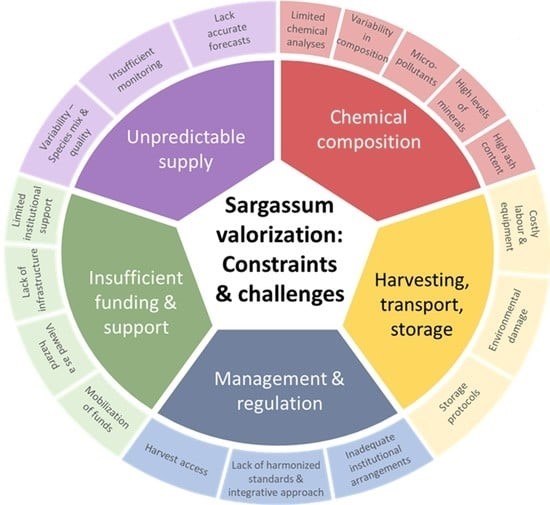
Figure 1: Barriers of Sargassum’s Production and Global Value Chain Flow
Source: Oxenford et al., (2021)
Details of these themes are evaluated as follows.
Sargassum Supply’s Seasonal Variations
Study by Desrochers et al., (2022) indicates Sargassum is not like other plants that are planted and generated to meet surging global demand. Instead Sargassum is undesirable seaweed which is harvested and utilised for the making of fertilizers, animal feeds and pharmaceutical products so as to get rid of it from the Caribbean beaches, shores and oceans. That implies it is not possible to increase the planting of Sargassum so as to increase its production to meet the surging global demand.
Businesses that seek to use Sargassum as part of its critical ingredients for making different products will have to wait for the seasons where Sargassum is able to flow to the shores of the Caribbean ocean and beaches. Unfortunately, due to seasonal variations and unpredictabilities of Sargassum’s production and supply, most of the businesses are unwilling to adopt and base their manufacturing plants on the inputs whose supplies cannot easily be predicted.
Given lack of available technologies, it is difficult to monitor and predict the time, quantity and location in which Sargassum seaweed will flow from the ocean to the shores. This affects the confidence and trust of different manufacturing entities around the world in the usage of Sargassum as the preferable sources of inputs for making different valuable products like fertilizers, pharmaceuticals, animal feeds and biogas.
Given alarm raised about the undesirability of Sargassum seaweed, its wider adoption has introduced scarcity. This has prompted most businesses that deal in Sargassum related products to consider moving into the sea with nets to harvest Sargassum. This is not because it is undesirable, but because of the increasing recognition of its economic value. Increment of the growth of Sargassum in the Caribbean ocean is attributed to climate change and the increment of dust from Sahara desert.
If these trends will continue influencing the growth and influx of Sargassum seaweed is fact that cannot easily be explained. This causes uncertainties for the businesses that use Sargassum because despite the increasing global demand, the supply of Sargassum cannot be influenced. As Starling (2024) notes, it is such uncertainty of Sargassum’s production and supply that affects the marketing of the Caribbean Sargassum as a sustainable alternative input for making some of the products. Such challenges are further compounded by the costs of using Sargassum.
Costs
Higher costs affect the distribution and utilisation of Sargassum products across the world. Since Sargassum is not grown and its supplies tend to vary across the year, it is only the businesses that are capable of harvesting and meeting high storage costs that engage in the business that uses Sargassum for different products. Unfortunately, processing and storage of Sargassum in larger quantities to respond to scarcity in seasons of declining production can be quite costly in terms of the technology required for processing and preserving Sargassum in its original state. Since such technologies are few, it tends to be costly to use the available few expensive technologies. In addition, harvesting Sargassum is becoming more complicated.
In the initial stages, it was easy because the economic value of Sargassum had not yet been widely recognised. Hence, Sargassum was abundant and available across the Caribbean seas, shorelines and beaches. However, as Sargassum became widely recognised for making different products, it started becoming scarce since different businesses would gather at the beaches waiting for Sargassum. In effect, more capable companies emerged to use varieties of unique technologies to go into the ocean and gather Sargassum from there.
These imply it is only the financially capable companies that may be able to engage in the harvesting of Sargassum from the ocean. In the end, this leads to higher costs of products made from Sargassum ingredients. This higher cost affects the competitiveness of Sargassum in the global market as the alternative products that respond to the needs of the largely low income global consumers. Increasing costs not only arise from high costs of harvesting and storing Sargassum, but also from high transportation costs.
Except from the United States and Canada, the Caribbean countries that produce Sargassum are isolated and far from the rest of the major global markets like Europe, Asia, Africa, Australia and New Zealand. This implies the cost of transporting Sargassum from any location in the Caribbean to any other desired market around the world may become quite costly to affect the reliance and usage of Sargassum as the inputs for making different products by different global producers. In addition to higher costs, the increasing adoption of Sargassum’s usage for making different human and animal food related products is also discouraged by the confirmed reports that Sargassum constitutes of chemical composition that may be harmful to humans, animals and the ecological environment (Alleyne et al., 2023).
Harmful Chemical Composition
Increasing usage of Sargassum for making different products is attributable to the quests to reduce its deposition along the shores and beaches. However, as much as such quests were aimed at reducing the damaging environmental health impacts of decaying Sargassum that causes respiratory problems and smell that pollute the air, even Sargassum use for making different products is also affected by some lethal composition of Sargassum.
Sargassum is established to contain higher amount of salt and ash contents. Sargassum also has higher absorption rate of heavy metals and other pollutants. This implies some producers and consumers around the world may be uncomfortable using products made from Sargassum’s inputs.
In effect, Loop (2023) reveals that most farmers had started adopting the usage of Sargassum products for the making of different animal feeds for goats. However, preliminary studies confirming higher levels of arsenic in Sargassum products have prompted most farmers to abandon the use of Sargassum for feeding goats. Higher amount of iodine as macronutrients as well as micronutrients have been confirmed to be harmful to animals, plants and humans.
Yet as Milledge et al., (2020) note, studies have also confirmed that most Sargassum products from the Caribbean contain more arsenic that exceed the permitted level of arsenic concentrations in most of the countries. This affects the adoption and utilisation of Sargassum for the making of different products.
In that process, as more consumers hope to use Sargassum, they are also still waiting for more studies to confirm or dispute the harmful health implications of using Sargassum products. All these uncertainties combine to undermine the wider adoption and usage of Sargassum products around the world. It affects the marketing and the improvement of the usage and flow of Sargassum products from the Caribbean producing counties to other markets around the world (Modestin et al., 2022).
RECOMMENDATIONS
Given the overall findings of this study, it is recommended that to improve the sale and distribution of Caribbean Sargassum products across the global market, Caribbean businesses will have to adopt the suggested Sargassum’s Global Supply Chain Management Model in Figure 2. The Adoption of the Sargassum’s Global Supply Chain Management Model in Figure 2 will require the development and use of a more effective Sargassum Global Supply Chain Management Plan.
To emerge with an effective Sargassum global supply chain plan that can improve the seamless sale, distribution and movement of different Sargassum products from the Caribbean market to different parts of the globe, Caribbean businesses will have to evaluate the global environmental trends to define clear goals and objectives that must be achieved through the adoption of the plan.
Defining clear goals and objectives guides the processes for ensuring that the use of Sargassum global supply chain management system influences the achievement of business goals of improving profitability and returns from the global market. These must be accompanied with thorough global market analysis, and the creation of an efficient global supply chain network that integrate all critical players like distributors, transporters, clearing and forwarding agents, salesmen, buyers, suppliers and custom agents for handling and managing all forms of documentations.
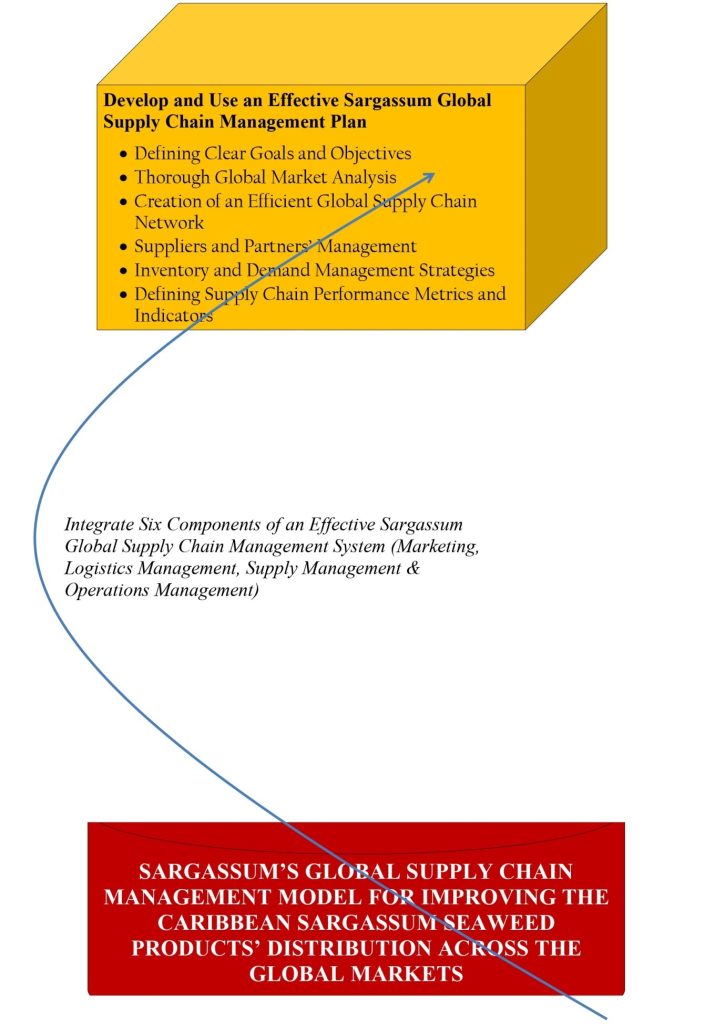
Figure 2: Sargassum’s Global Supply Chain Management Model
Given the vast networks of suppliers and partners dealing in the international Sargassum production business, it is also essential for the executives to develop an effective system for managing suppliers and partners. These must be accompanied with the use of an effective inventory and demand management strategies that seek to balance demand with supply so as to eliminate wastes and costs of moving Sargassum products from the Caribbean to the other global markets.
To monitor whether the use of Sargassum global supply chain management system is influencing the attainment of the desired outcomes, businesses will also have to develop and use the appropriate Sargassum supply chain performance metrics and indicators. However, to deal with the challenges of Sargassum supply’s seasonal variations, higher costs and risks of harmful chemical composition, businesses will have to integrate six components of an effective Sargassum global supply chain system that include marketing, logistics management, supply management and operations management.
Limitations And Future Research
Though this study offers critical insights that can be adopted to improve the sale and distribution of Caribbean Sargassum products around the world, its major limitations are still reflected in the fact that it used integrative review that may or may not reflect the actual situation on the ground. In effect, future studies must consider using qualitative research methods to elicit in-depth facts on how the sale and distribution of Caribbean Sargassum around the world can be improved. Given the overall findings of this study, it is also recommended that to improve the sale and distribution of Caribbean Sargassum products across the global market, most Caribbean businesses will have to adopt the suggested Sargassum’s Global Supply Chain Management Model in Figure 2. However, scientific validity of the suggested model is yet to be tested by the future quantitative or multivariate analysis studies.
Cite: Sargeant, R. (2025). Caribbean Sargassum’s Innovative Global Supply Chain Management Model. London: Cloud Analytika.
References
Alfalla-luque, R., Machuca, J. A. D., & Marin-garcia, J. A. (2018). Triple-A and competitive advantage in supply chains: empirical research in developed countries Rafaela. International Journal of Production Economics.
Alleyne, K. S., Neat, F., & Oxenford, H. A. (2023). An analysis of arsenic concentrations associated with sargassum influx events in Barbados. Marine Pollution Bulletin, 192, 115064.
Brown, M. (2024). Preparing for 2024 supply chain challenges and priorities: Organizations are prioritizing preparedness against ongoing uncertainty. Supply Chain Management Review, 21(2),16-33.
CarbonWave. (2023). Is sargassum seaweed a good fertilizer? Benito-Juarez, Mexico: CarbonWave.
Carrillo-Domínguez, S., Rodríguez-Martínez, R. E., Díaz-Martínez, M., Magaña-Gallegos, E., Cuchillo-Hilario, M. (2022). Potential application of pelagic Sargassum spp. in animal feeding. J Appl Phyc, 35, 433-444.
Coxworth, B. (2020). Inexpensive process converts waste seaweed into biofuel, fertilizer and more. Florida: New Atlas.
Chen, C., & Chen, C. (2018). Competitive advantage Developing a model for supply chain agility and innovativeness to enhance firms ’ competitive advantage. Management Decision.
Desrochers, A., Cox, S.A., Oxenford, H.A., & Tussenbroek, B.V. (2022). Pelagic Sargassum: A guide to current and potential uses in the Caribbean. Rome: Food And Agriculture Organization Of The United Nations.
Devault, D. A., Pierre, R., Marfaing, H., Dolique, F., & Lopez, P. J. (2020). Sargassum contamination and consequences for downstream uses: a review. Journal of Applied Phycology, 33, 567-602.
Dujon, J. (2022). Innovative, Sustainable American Fertilizer Production From Invasive Sargassum Seaweed: 2022 SOST Opportunities and Actions Roundtable. Florida: Algas Organics.
Dulanlebit, Y. H. ., & Hernani, H. (2023). Overview of Extraction Methods for Extracting Seaweed and its Applications . Jurnal Penelitian Pendidikan IPA, 9(2), 817–824.
Durach, C. F., Joakim, K., & Wieland, A. (2017). A New Paradigm For Systematic Literature Reviews In Supply Chain Management at Berlin. Journal of Supply Chain Management, 53(4), 67–85.
Ferdows, K. (2018). Keeping up with growing complexity of managing global operations. International Journal of Operations and Production Management, 38(2), 390–402.
Ferdows, K., Vereecke, A., & De Meyer, A. (2016). Delayering the global production network into congruent subnetworks. Journal of Operations Management, 41, 63–74.
GEP. (2024). The Advantages And Disadvantages Of Global Supply Chains. Boston: GEP.
Herjevik, S., & Wed, A. (2022). Biogas production with Sargassum algae in Grenada: Optimization of process and market analysis. Grenada: Swedish International Development Cooperation Agency.
Hinds, C., Oxenford, H., Cumberbatch, J., Fardin, F., Doyle, E., & Cashman, A. (2016). Sargassum management brief: Golden Tides: Management best practices for influxes of Sargassum in the Caribbean with a focus on clean-up. Centre for Resource Management and Environmental Studies (CERMES), The University of the West Indies, Cave Hill Campus, Barbados.
INTEC. (2023). INTEC and Origin By Ocean sign agreement to export Sargassum. SANTO DOMINGO: INTEC.
Johnson, J., & Engel, S. (2022). Sargassum Fertilizer Transfers Heavy Metals to Vegetables. Rotterdam: WWF-Netherlands.
Joseph, K., O’Brien, T., & Correa, H. (2017). Tax strategies and organizational communication in MNC supply chains: Case studies. International Journal of Logistics Research and Applications, 20(2), 105–128.
Kembro, J. H., & Norrman, A. (2020). Which future path to pick? A contingency approach to omni-channel warehouse configuration. International Journal of Physical Distribution & Logistics Management, 51(1), 48–75.
Leo, B., Aryanto, R., & Gautama, I. (2015). The Impact of Enterprise Resources System and Supply Chain Practices on Competitive Advantage and Firm Performance : Case of Indonesian Companies. Procedia – Procedia Computer Science, 72, 122–128.
Linda, M. R., & Thabrani, G. (2021). Supply Chain Management Practices on Competitive Advantage with Supply Chain Performance as Moderating Variable. Advances in Economics, Business, and Management Research, 192(Piceeba), 469–480.
Loop. (2023). Entrepreneur finds a solution to sargassum headache. St. Lucia: Loop.
López-Contreras, A., Núñez Valenzuela, P. N., García, B. C., Driegen, J., Huerta Lwanga, E., Domin, P., Polett Gurrola, M., Rosas-Luis, R., Verde Gómez, Y., & De Vrije, T. (2022). Sargassum in Mexico: From environmental problem to valuable resource. Wageningen Food & Biobased Research. Wageningen, Netherlands.
Maat, P., Syamsu, Armayah, & Musran, M. (2020). The effect of supply chain strategy toward competitive advantage, and company performance : the case of small- medium industries in West Sulawesi Province of Indonesia. ESPACIOS, 41(14), 16.
Major. A., Margiotta, E., Green, D., Lorenzoni, L., & McClain, S. (2020). Vulnerability assessment of Sargassum impacts on the Caribbean [Final Report – Draft]. National Aeronautics and Space Administration Internship Program, Summer 2020.
Milledge, J. J., Maneein, S., Arribas López, E., & Bartlett, D. (2020). Sargassum inundations in Turks and Caicos: Methane potential and proximate, ultimate, lipid, amino acid, metal and metalloid analyses. Energies, 13, 1523.
Modestin, E., Devault, D. A., Baylet, A., Massat, F., & Dolique, F. (2022). Arsenic in Caribbean bivalves in the context of Sargassum beachings: A new risk for seafood consumers. Environ Monit Assess, 194, 553.
Norrman, A., & Wieland, A. (2020). The development of supply chain risk management over time: Revisiting Ericsson. International Journal of Physical Distribution & Logistics Management, 50(6), 641–666.
Olhager, J., & Feldmann, A. (2018). Distribution of manufacturing strategy decision-making in multi-plant networks. International Journal of Production Research, 56(1–2), 692–708.
Olhager, J., & Feldmann, A. (2021). Linking plant roles and operations strategy decision-making autonomy in international manufacturing networks. International Journal of Production Research, 60(1), 242–255.
Orozco-González JG, Amador-Castro F, Gordillo-Sierra AR, García-Cayuela T, Alper HS and Carrillo-Nieves D (2022) Opportunities Surrounding the Use of Sargassum Biomass as Precursor of Biogas, Bioethanol, and Biodiesel Production. Front. Mar. Sci. 8:791054.
Orozco-González JG, Amador-Castro F, Gordillo-Sierra AR, García-Cayuela T, Alper HS and Carrillo-Nieves D (2022) Opportunities Surrounding the Use of Sargassum Biomass as Precursor of Biogas, Bioethanol, and Biodiesel Production. Front. Mar. Sci. 8:791054.
Oxenford, H.A., Cox, S.A., van Tussenbroek, B.I., & Desrochers, A. (2021). Challenges of Turning the Sargassum Crisis into Gold: Current Constraints and Implications for the Caribbean. Phycology, 1(1), 27-48.
Palamariu, R. (2024). Navigating The Future: Tech Trends Shaping Supply Chain Leadership In 2024. New York: Forbes.
Pashaei, S., & Olhager, J. (2015). Product architecture and supply chain design: A systematic review and research agenda. Supply Chain Management: An International Journal, 20(1), 98–112.
Pashaei, S., & Olhager, J. (2017). The impact of global operations on product architecture: An exploratory study. International Journal of Operations and Production Management, 37(10), 1304–1326.
Pashaei, S., & Olhager, J. (2019). Product architecture, global operations networks, and operational performance: An exploratory study. Production Planning & Control, 30(2–3), 149–162.
Prataviera, L. B., Norrman, A., & Melacini, M. (2020). Global distribution network design: Exploration of facility location driven by tax considerations and related cross-country implications. International Journal of Logistics Research and Application.
Ramcharan, J. (2023). Sargassum Seaweed in the Caribbean: Mitigation Strategies, Innovative Uses, and Collaborative Efforts. Port of Scarborough, Tobago: Newsday.
Shunko, M., Do, H. T., & Tsay, A. A. (2017). Supply chain strategies and international tax arbitrage. Production and Operations Management, 26(2), 231–251.
Starling, M. (2024). Caribbean startups are turning excess seaweed into an agroecology solution. St. Lucia: Carobonwave.
Stevenson, M. (2022). Mexico’s Caribbean beaches awash in foul-smelling Sargassum algae. Chicago Sun Times.
Tapia-Fuentes, J., Cruz-Salas, A. A., Martínez-Salvador, C., Ojeda-Benítez, S., Vázquez-Morillas, A., & Álvarez-Zeferino, J.C. (2023). Presence of microplastics deposited in Sargassum sp. on sandy beaches. Regional Studies in Marine Science, 66, 103152.
Thompson, T.M., Young, B.R., & Baroutian, S. (2019). Pelagic Sargassum for energy and fertiliser production in the Caribbean: A case study on Barbados. Renewable and Sustainable Energy Reviews, Elsevier, 118(C), 166-193.
Tukamuhabwa, B., Mutebi, H., & Kyomuhendo, R. (2021). Competitive advantage in SMEs : effect of supply chain management practices, logistics capabilities and logistics integration in a developing country. Journal of Business and Socio-Economic Development.
Vázquez-Delfín, E., Freile-Pelegrín, Y., Salazar-Garibay, A., Serviere-Zaragoza, E., Méndez-Rodríguez, L. C., & Robledo, D. (2021). Species composition and chemical characterization of Sargassum influx at six different locations along the Mexican Caribbean coast. Sci Total Environ., 795, 148852.
Wang, M., & Hu, C. (2016). Mapping and quantifying Sargassum distribution and coverage in the Central West Atlantic using MODIS observations. Remote Sensing of Environment, 183, 350-367.
Wang, M., Hu, C., Cannizzaro, J., English, D., Han, X., Naar, D., Lapointe, B., Brewton, R., & Hernandez, F. (2018). Remote sensing of Sargassum biomass, nutrients, and pigments. Geophysical Research Letters, 45, 12,359-12,367.
Ward, T. (2024). Global Supply Chain Management: Best Practices and Trends. London: HICX.
Wong, C. W. Y., Sancha, C., & Gimenez Thomsen, C. (2017). A national culture perspective in the efficacy of supply chain integration practices. International Journal of Production Economics, 193, 554–565.
Yan, T., Choi, T. Y., Kim, Y., & Yang, Y. (2015). A theory of the nexus supplier: A critical supplier from a network perspective. Journal of Supply Chain Management, 51(1), 52–66.
Yende, S.R, & Harle, U.N., & Chaugule, B.B. (2014). Therapeutic potential and health benefits of Sargassum species. Pharmacogn Rev. 2014 Jan;8(15):1-7.


